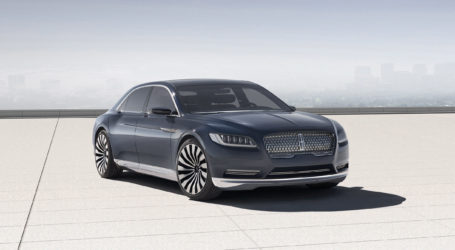Audi Q7 e-tron 2015 review
This is the plug-in hybrid Audi Q7 e-tron. Everyone’s at it: from pioneers Nissan to latecomers like Volvo, almost every manufacturer has an electric or hybrid model in its range.
It comes as no surprise, then, that Audi’s e-tron family is expanding. The popular A3 e-tron appeared only late last year, and there’s already an electric R8 supercar in the pipeline.
But the latest model to bear Audi’s plug-in moniker is the big and brash Q7 SUV. Using a 254bhp 3.0-litre TDI diesel engine mated to a 94kW electric motor, total power for the Q7 e-tron stands at 368bhp. It’s got a sizeable 700Nm of torque, too – which comes in handy when you’re lugging around 202kg of lithium-ion batteries.
From the outside, you’ll struggle to tell this apart from a standard Q7. Our car came with loud e-tron stickers down the side, but (sadly) these aren’t an option on customer cars. There are some subtle badges on the wings and bootlid, but aside from the additional filler cap it’s business as usual.
It’s the same story inside. Based on the SE, the e-ton gets a luxurious interior with swathes of leather and all the usual precision-engineered buttons and switches. The TT’s Virtual Cockpit is standard on all Q7 e-trons, though that’ll do little to justify the estimated £15,000 premium (not inclusive of the anticipated government grant) over the already efficient diesel.
This 2.5-tonne SUV is a considerable 450kg heavier than the 3.0 TDI, thanks to the ‘additional hybrid components’ – yet it’ll return an all-electric range of almost 35 miles, and a scarcely believable 166mpg. Of course, like any PHEV, you need regular access to a charge point to realise these efficiency claims, but Audi claims class-leading 46g/km CO2 emissions. It’ll take two and a half hours to top up the batteries on a fast charger, or around eight hours from a domestic socket.
Those CO2 emissions mean it’s not only free to tax, but that it’s also cheap to run as a company car. Like its main rival – the petrol-electric Volvo XC90 T8 – it falls into the five per cent BiK bracket. This is a full-size SUV that emits less CO2 than a diesel supermini. The mind boggles.
But despite its size, it’s also quieter than a supermini. In EV mode it’s eerily hushed, and even at motorway speeds all you’ll suffer is the very slightest roar from the 20-inch wheels. On the air suspension of our test car it’s super comfortable, and the plush leather seats to a great job of keeping you snug during more spirited driving.
You can feel the extra weight, and as a result it’s not quite as playful as the standard car. Body roll is kept largely in check, but push it harder and it becomes increasingly difficult to throw around. The steering is a bit light and the regenerative brakes can feel overactive as you come to a halt – removing almost all feel through the pedal.
That said, the instant torque from the electric motor means throttle response is immediate, though there can be a bit of a delay when accelerating away from junctions if you’ve not come to a complete stop.
There are four drive modes. EV, Hybrid, Battery Hold and Charge. The first prioritises emission-free driving, while Hybrid provides the best compromise of electric and engine to maximise efficiency. Battery Hold will retain current charge, while Charge will generate electricity and boost the batteries using the diesel powertrain.
The clever stuff actually comes when you plumb an address into the sat-nav. Using navigation, radar and camera data, it generates a detailed image of the route up to two miles ahead – prepping the drivetrain to utilise, save or generate charge. It also advises you of when to lift off the throttle, by illuminating an icon on the dash and pulsing a signal through the pedal. It actually works really well, and in theory – if you leave the drive modes alone – will result in a near-empty battery when you reach your destination.
The Q7 e-tron can also use waste heat from the drive components to effectively heat or cool the interior, with Audi claiming the result is a significant increase in the car’s all-electric range.










